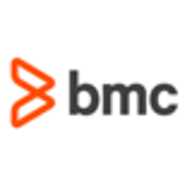


Find out what your peers are saying about BMC, Broadcom, Redwood Software and others in Workload Automation.



Control-M by BMC offers orchestration for hybrid cloud workflows, starting at $29,000 annually. It's designed for teams managing dependencies efficiently with automation and scheduling capabilities.
Control-M is known for its automation, integration, and scheduling capabilities. It provides a user-friendly GUI for seamless third-party application integration and robust file transfer capabilities. Role-based administration features, self-service portals, and the ability to handle complex workflows enhance operational efficiency. Its control modules enable diverse integrations, while forecasting, monitoring, and alerting functionalities improve reliability and adaptability across platforms, making it essential for orchestrating tasks efficiently.
What are Control-M's key features?Control-M is vital in industries like financial services, data management, and IT operations. It automates batch processing, job automation, and file transfers, supporting applications such as SAP, Oracle, and Informatica. This enhances transparency, reduces errors, and provides insights into job performance and system status.
IBM Workload Automation streamlines scheduling with automation and dynamic workload balancing. It integrates multiple platforms, offering efficient management across diverse systems, enhancing operational productivity.
IBM Workload Automation provides end-to-end control in managing tasks across varied platforms, supporting event-based scheduling and real-time updates. Its intuitive GUI allows seamless scripting and monitoring, facilitating integration with applications like SAP and Oracle. The inclusion of FTA agents ensures efficient local dependency management, while offering versatile scheduling options. Its capability to provide a comprehensive view, manage CPU usage, and meet service level agreements positions it as a valuable tool for large-scale operations.
What are the most important features?Industries such as government, banking, and large enterprises implement IBM Workload Automation for automated scheduling, workload balancing, and batch processing. It assists in migrating from legacy systems to web-based services, integrating with numerous applications, and managing extensive daily job lists. Key functions include offshore management and backend data collection, crucial for effective resource tracking. This adaptability enables organizations to efficiently support operations while scaling workloads as needed.
Rocket Zena offers scheduling and dependency mapping, intuitive interface, and containerized deployment. It simplifies workflow automation, enhancing efficiency across platforms.
Rocket Zena's strengths lie in its scheduling capabilities, graphical interface, and efficient deployment. It supports users in task management with cross-platform scheduling, streamlining repetitive tasks through automation. The web-based client facilitates process visualization and workflow management, while the notification system enhances task handling. Users can manage mainframe, Linux, and Windows environments while integrating with SAP and Oracle, ensuring comprehensive automation and efficient job execution.
What are the key features of Rocket Zena?In industries like finance and manufacturing, Rocket Zena plays a vital role in scheduling batch jobs and automating file transfers. It helps adapt task scheduling to business calendars and integrate with existing platforms, ensuring a smooth workflow that meets business objectives.